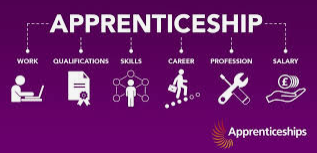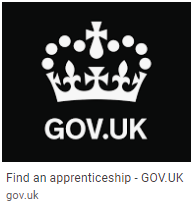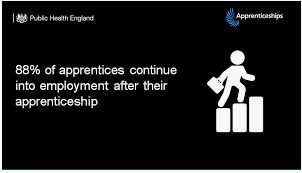Post-16 Options
It is compulsory for students leaving school to continue their studies in Further Education until they are 18 years old, but what are their options when they leave school?
Further Education (sometimes referred to as FE) is the study after Secondary Education. This could be studying A Levels, vocational qualifications or a T-Level at a College or Sixth Form, or doing an apprenticeship which combines on the job training with studying once a week at college. Once Further Education has been completed, students are able to make a decision as to whether they would like to continue their studies at Higher Education (HE) offered at Universities or undertake a Degree Apprenticeship.
College
One of the first things you will notice at any further education college is that the range of courses is much wider than a sixth form. Not all colleges offer A-Level courses (so it is worthwhile doing your research) however they do offer a wide range of vocational qualifications available in different subjects and at different levels meaning there is a course for everyone. It is very important to check carefully what is available locally.
The best way to choose the right college for you is to attend one of their open evenings. This gives you the opportunity to look around and explore the different courses available. You can also visit their website which includes course details and online application forms. Once you have decided on the course for you, you can apply online directly or use the application found at the back of their prospectus booklet.
You are not limited to the number of colleges you can apply to and you can be accepted into several colleges, it is up to you to decide the best option for you
There are two colleges local to the school, please take a look at their websites for more information:


Sixth Form
Sixth Forms are similar to College; you can study both vocational and A-Levels however your study will take place within a school environment. Please note that grammar sixth forms do not offer vocational courses. You may find that there are less courses to choose from compared to a College however they may specialise in certain subject areas. This can be beneficial for students who have a good idea of what they would like to do and would prefer the sixth form environment.
The best way to choose the right Sixth Form for you is to attend one of their open evenings. This gives you the opportunity to look around and explore the different courses available. It may also help you decide whether you prefer a college or sixth form environment.
You are not limited to the number of Sixth Forms you can apply to and you can be accepted into several colleges, It is up to you to decide the best option for you.
For more information about Further Education and Post-16 Qualifications please follow the link below.
https://www.ucas.com/further-education/post-16-qualifications/post-16-qualifications-you-can-take
 Apprenticeships
Apprenticeships
What is an apprenticeship?
Apprenticeships combine practical training in a job with study. As an apprentice you will:
- be an employee earning a wage and getting holiday pay
- work alongside experienced staff
- gain job-specific skills
- get time for training and study related to your role (at least 20% of your normal working hours)
Apprenticeships take between 1 and 5 years depending on the level taken.
Levels of apprenticeship
Apprenticeships have equivalent educational levels.
| Level | Equivalent educational level | |
|---|---|---|
| Intermediate | 2 | GCSE |
| Advanced | 3 | A level |
| Higher | 4,5,6 and 7 | Foundation degree and above |
| Degree | 6 and 7 | Bachelor’s or master’s degree |
Some apprenticeships may also give you an additional qualification, such as a diploma.
Some apprenticeships don’t require any previous qualifications, but all apprentices must have Functional Skills qualifications in English and Maths (and sometimes ICT) by the end of the apprenticeship. Apprentices who don’t have these qualifications when they begin the apprenticeship will be provided with extra support and training.
Apprentices with an existing or previously issued Education, Health and Care (EHCP) Plan, a Statement of Special Educational Needs (SEN) or a Learning Difficulty Assessment (LDA) can apply for an adjustment to the minimum standards of English and Maths. The employer and training provider must also agree that the apprentice should otherwise be able to complete the apprenticeship.
What will I be earning?
As an apprentice, you will be entitled to the National Minimum Wage.
For 16–18-year-olds that is currently £4.30 per hour (£4.81 from April 2022)
You will get paid for your normal working hours; plus, the time you spend training/studying
Who can start an apprenticeship?
To start an apprenticeship, you’ll need to be:
- 16 or over
- living in England
- not in full-time education
You can apply for an apprenticeship while you are still at school, however you will need to be 16 or over before the end of the summer holidays to start an apprenticeship.
Find an apprenticeship
 You can search via gov.uk for apprenticeship vacancies: CLICK HERE
You can search via gov.uk for apprenticeship vacancies: CLICK HERE
Useful websites:
Reed (Applying for Apprenticeships)
T-Levels
What are-Levels?
T-Levels are qualifications combining classroom learning, alongside an industry placement and they are designed for young people as an option following GCSEs (post-16).
Some key facts
- They last for 2 years
- They are equivalent to three A levels.
- They attract UCAS points.
- They have been created alongside employers.
- They include an ‘Industry placement’ of at least 45 days.
- For anyone not quite ready, there is a 1-year transition programme.
- Students will receive a nationally recognised qualification.
Which T Levels are available?
- Accounting
- Building Services Engineering for Construction
- Design and Development for Engineering and Manufacturing
- Design, Surveying and Planning for Construction
- Digital Business Services
- Digital Production, Design and Development
- Digital Support Services
- Education and Childcare
- Engineering, Manufacturing, Processing and Control
- Finance
- Health
- Healthcare Science
- Maintenance, Installation and Repair for Engineering and Manufacturing
- Management and Administration
- Onsite Construction
- Science
How is a T Level structured?
80% of the qualification is classroom-based and 20% is spent undertaking an industry placement with an employer in the workplace.
Your training provider will be responsible for finding the employer(s) that will provide your industry placement.
How can I find out which providers offer T Levels?
The government has created a really useful website where you can enter your postcode and search for T Level providers that are local to you.
Here’s what you can do:
- Visit the website: www.tlevels.gov.uk/students/find
- Enter your postcode.
- Look through the list of providers in your local area.
- Visit their website to find out more about their T Level courses and any Open Days that might be coming up.
What is the difference between T Levels and apprenticeships?
Apprenticeships are paid work, suitable for students who know which job role they want to pursue and are split 80% on-the-job, 20% off-the-job. The duration of an apprenticeship will vary depending on the level and type of programme being studied.
T Levels are largely classroom-based (80%) and contain a substantive industry placement (approximately 20%). They last for 2 years and offer a broad course content, with the opportunity to specialise in a particular occupation.
Watch this video for more information: https://www.youtube.com/watch?v=7rua65bHjMw
Useful websites:
https://www.ucas.com/further-education/post-16-qualifications/qualifications-you-can-take/t-levels

